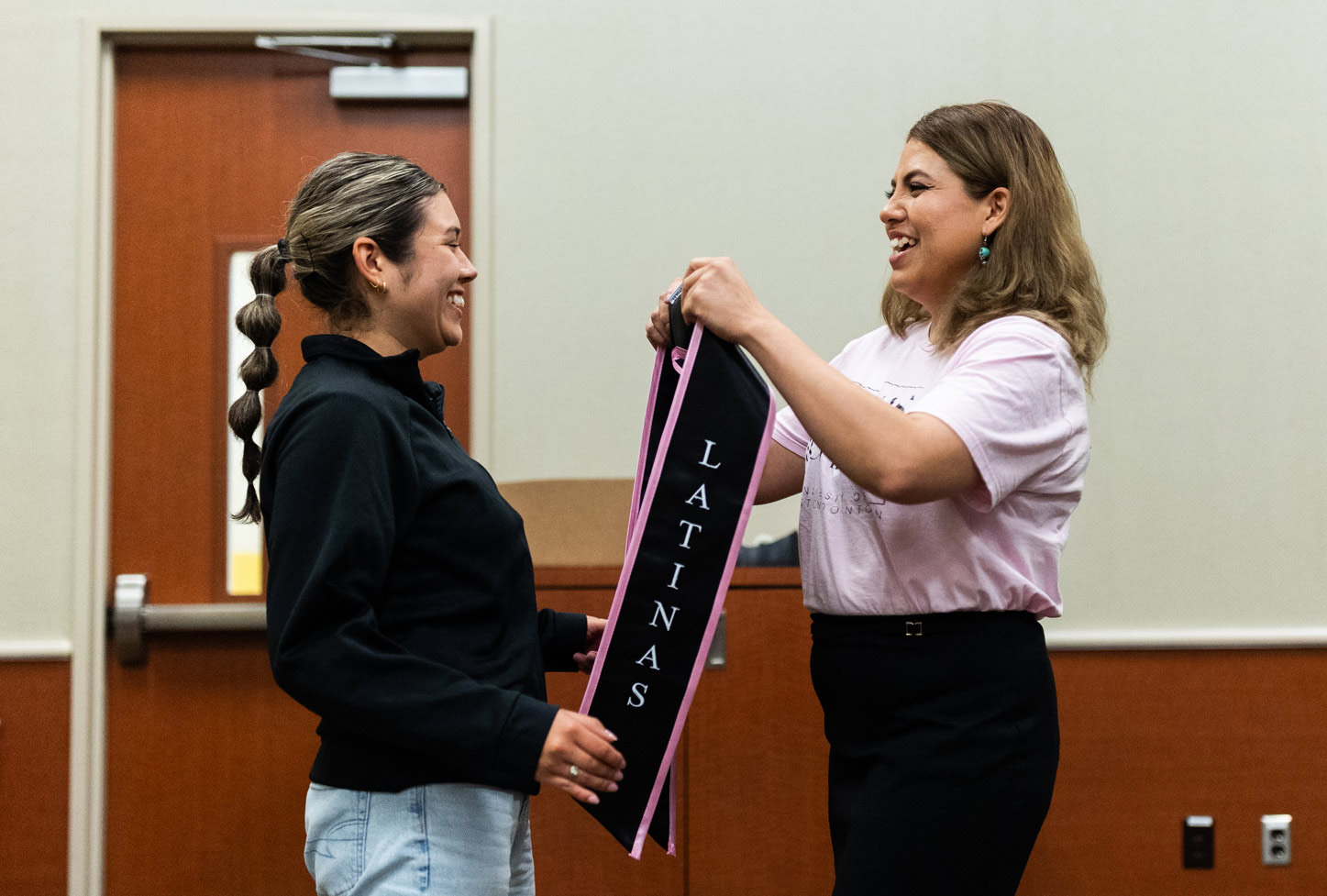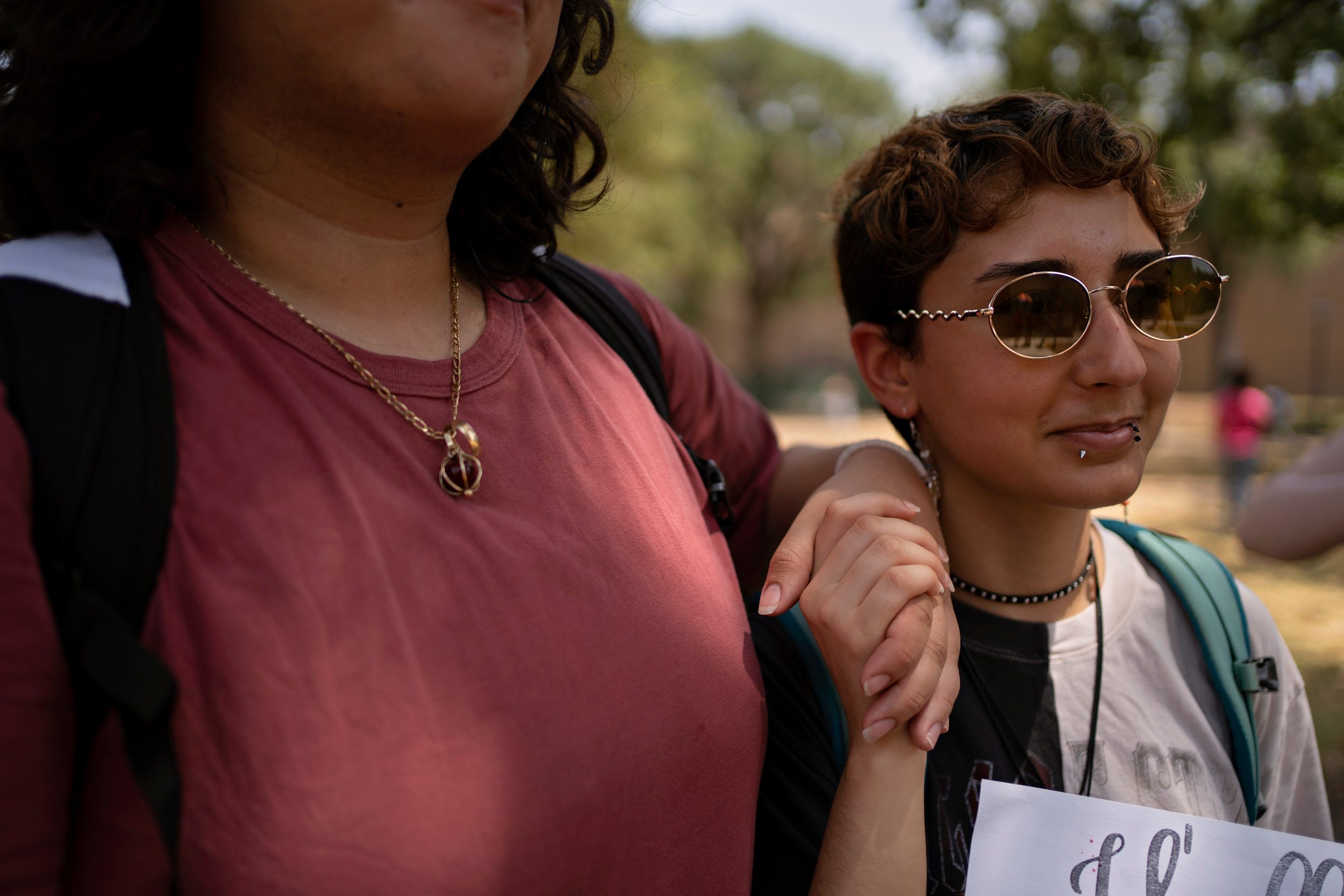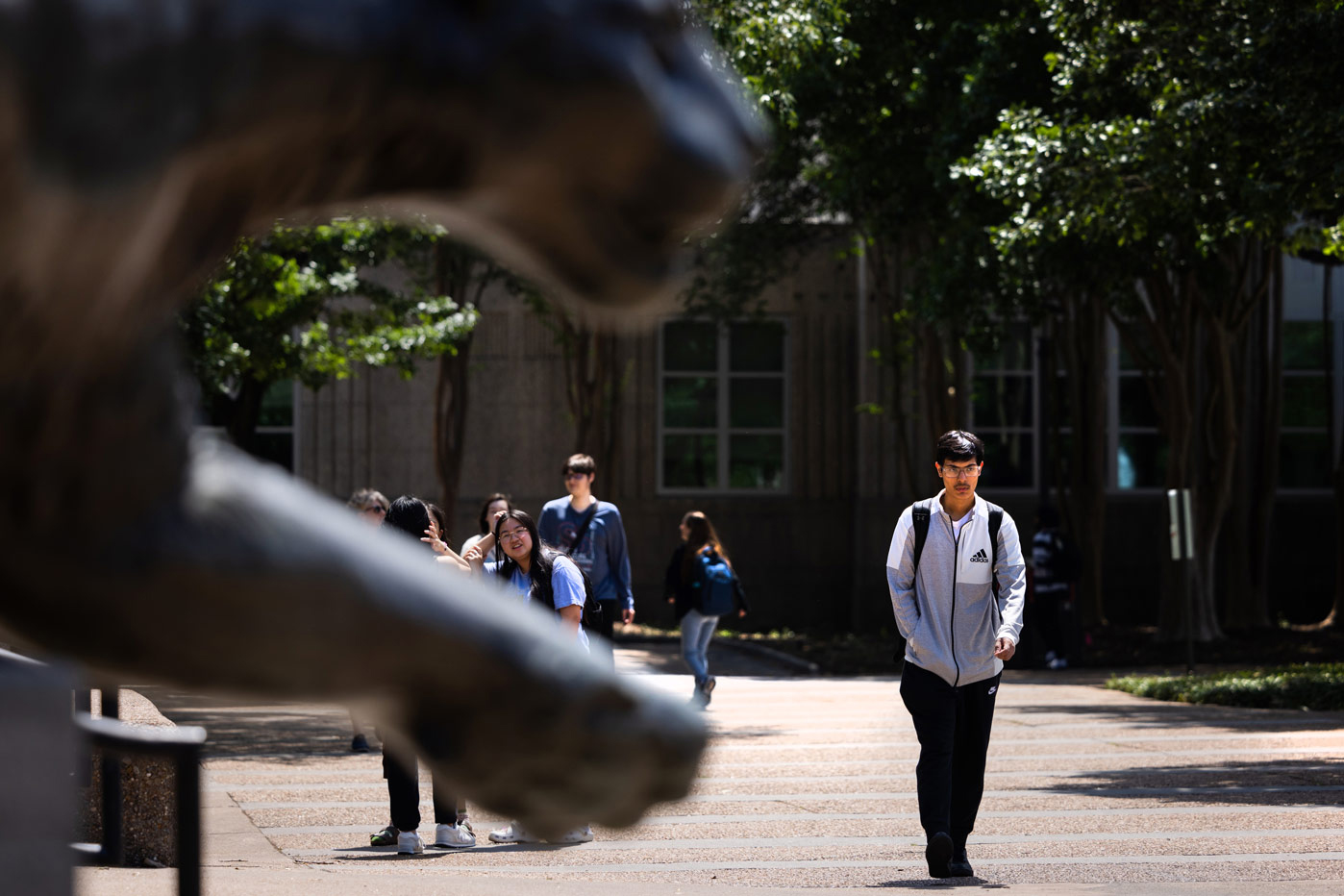Beatriz Hernández recalls falling into the life of a housewife at an early age. She had gotten pregnant a few weeks shy of her 19th birthday and her relationship with her now ex-husband soon evolved into a life of abuse that would take her at least a decade to escape.
At 33, she did what she always knew she wanted to do: She enrolled in college.
She started with a certificate to become a paralegal, but didn’t stop there. Now at 39 and while raising three children, she is completing her bachelor’s degree in criminal justice at the University of Houston-Downtown. She also has her eye on earning a master’s and doctorate degrees.
“Podemos hacerlo,” Hernández said. “We can represent Latinas that are going through similar situations as us, because you never know.”
In contrast to her story, Edward Saenz does not recall ever feeling pressured to go to college.
His father graduated with a degree in electrical engineering and his mother completed some college. But Saenz wasn’t sure higher education was for him, so for two years after high school, he worked as an electrician following his brothers’ footsteps.
“I very quickly realized, ‘This isn’t fun’ and ‘I don’t want to get hurt on the job,” Saenz said.
That’s when college started to make more sense to him, and once he made the decision to pursue a degree, he found it more rewarding.
“It was my choice. It wasn’t forced on me,” Saenz said.
Today, Saenz works at Que Onda Magazine, covering Latino and Hispanic events and issues across the city. He graduated in May 2022 with a bachelor’s degree in professional writing and technical communications.

Hernández and Saenz are examples of trends happening across the U.S. when it comes to Latinos in higher education.
A recent national study by the nonprofit organization Excelencia in Education, found that Latinas are enrolling and earning higher education degrees at higher levels than Latino males, despite Latino males’ high school dropout rates decreasing over the last decade.
Excelencia in Education, a nonprofit that seeks to create an intentional approach to serving Latino students, recently released an annual report titled Latinos in Higher Education: 2024 Compilation of Fast Facts. The report is intended to provide better understanding of the state of Latinos in Higher Education beyond enrollment.
“What you see laid out is kind of an outline, a roadmap, of how they should be thinking about their Hispanic students,” said Deborah Santiago, co-founder and CEO of Excelencia in Education. “So looking at the workforce, retention, transfers, financial aid, males and females.”



Latino and Latina achievement
Like Hernández and Saenz, the majority of Latinos attend public colleges and universities, the report states. Many of these institutions have earned the federal designation of Hispanic Serving Institution, which is given to institutions where at least 25 percent of the total enrollment is Latino or Hispanic students.
Nearly half, or 48 percent, of all women enrolled across Hispanic Serving Institutions during the fall of 2020 were Latinas, the report found. Latinas also represent 60 percent of all Latinos enrolled in these institutions.
Across the U.S., there are 516 colleges and universities federally designated as Hispanic Serving Institutions. The total enrollment of Hispanic or Latino students across these institutions was nearly 2.1 million in the fall of 2021, according to the National Center for Education Statistics.
By 2021, more than 53 percent of Latinas 25 years or older had earned a high school diploma, the Excelencia report found, and 29 percent of them had earned a college degree, with the majority obtaining an associate’s and bachelor’s degree.
In the same year, Latino male high school dropout rates had decreased to 9 percent, down from 15 percent 10 years prior, in 2011. But males represented 40 percent of all Latino undergraduates in 2021 and Latinas made up 60 percent.
While there was still an increase in Latino male college attainment and enrollment, it fell short of that of Latinas. Over the last decade, Latino male college enrollment increased by 16 percent, from 1.14 million to 1.32 million.
“We saw that, even more than females, Latino males could get jobs in construction, or physical labor,” Santiago said. “The opportunity cost for a young male of color, Black and Latino, is often higher because they have to say no to a job paying $20-$25 an hour to go to school.”
Santiago notes that the coronavirus pandemic added challenges to this group of students. While all of Latinos were more disproportionately affected by the pandemic, many young males in high school or graduating high school had to choose between a high-paying job and attending college.
College was competing with the need to help themselves or their families financially, and it is not surprising that in many cases young males had to choose a job, she said. Another important challenge that the pandemic brought along was lack of in-person learning making college less attractive to some.
“Many of the institutions of higher education – because the education had to be online during the pandemic – were not as interactive and hands-on,” Santiago said. “Males do better in an academic environment with interactive and applied learning.”

Appealing to diverse students
Across the U.S. Latino higher education enrollment and attainment has steadily increased. But in states like Texas, where diversity-focused offices and initiatives have been limited by Senate Bill 17, institutions are grappling with the predicament of how to address the changing needs of students.
SB 17 went into effect Jan. 1, effectively banning diversity-focused offices and initiatives at public institutions, threatening potential financial penalties, loss in state funding, lawsuits and “institutional enhancements.”
But in cities as diverse as Houston this begs the question: How do you address enrollment and graduation rates without focusing on diversity?
“What we know is that no state, no institution can reach its college attendance goals without our population,” Santiago said.
Between 2010 and 2020, the Latino population in the U.S. grew from 55.5 million to 62.1 million, the report states. In Houston the Latino or Hispanic population has steadily increased over the last decade.
In 2010, nearly 920,000 Houston residents identified themselves as Latinos making up about 43.8 percent of the total population, and by 2023, this number surpassed 1 million, encompassing 44.8 of the population, according to U.S. Census data.
At UHD, about 57 percent of the total 14,105 students registered in the fall of 2023 identified themselves as Hispanic or Latino, and more than 62 percent are female. Over the last four years, the number of Latino students enrolled has increased by about 6 percent.



Next door at UH, Latinos account for 34 percent of the total student population, the largest share of the student body, according to the latest data made available by the university. That’s 15,666 Latino students out of 46,676 total students enrolled during the fall of 2023.
“Houston is one of the most diverse cities in the United States and our student community reflects that diversity. So we want to make sure that we highlight the full intent of that diversity,” said Albert DeJesús- Rívera, University of Houston-Downtown professor and interim director of the Center for Latino Studies.
Diversity in the student body is a given at UHD, DeJesús-Rívera said, and while SB 17 has forced them to make some adjustment in the type of targeted resources the center used to offer, they so far haven’t had to do away with some of the more broad offerings meant to inform students about their options.
Latinas Achieve, for example, the organization that Hernández now leads as student president, was one of the few to change due to SB 17. It was first created and led by university faculty and staff through the Center for Latino Studies, but as SB 17 took effect, it had to switch to a student-led initiative.
Other adjustments have come naturally over the years, DeJesús-Rívera said. The number of evening classes, for example, increased to accommodate the demand. Today, he normally has about 15 to 18 students enrolled for his day classes, but in the evening, it is typical to have at least 20 students enrolled.
Evening in-person classes are also starting later than they used to, he noted, as it used to be normal for these to start at 5 p.m., but now they’ve shifted to 7 p.m. to allow for commuting and other responsibilities.
“Our students usually do work and they’ve been working since they’re young… some of them are the primary caretakers in their families,” DeJesús-Rívera said.
Being informed of these trends is important to ensure the majority of students don’t get left out, Santiago said.
At the moment, the conversation about college diversity in Texas might revolve around SB 17, Santiago said, but that doesn’t stop the work that she and her team are doing to advocate for a more informed and realistic approach to college attainment.
“You better know who you are serving, who you are not serving, and who you intend to serve,” she said. “Are we looking at the retention of our Hispanic students, and not just the enrollment?”


